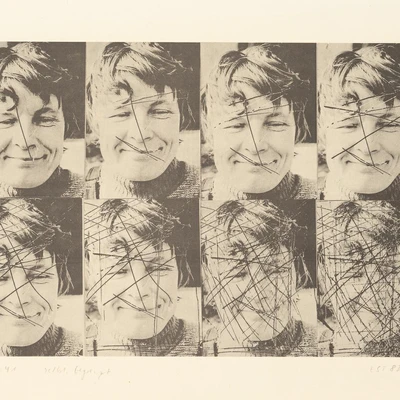Horst Bartnig
- * 1936
- † 2025
Life dates
- Artist
Category
Concrete Art
Horst Bartnig, painter and computer graphic designer in Berlin, belongs to the vibrant and internationally networked scene of concrete art. Born 1936 in Milicz in Silesia, he studied stage design starting in 1954 at the Kunstgewerbeschule Magdeburg. He worked professionally as painter of sets first in Weimar and later in Berlin. During this period, he occasionally accompanied the Deutsches Theater on its foreign tours. It was on one of these occasions that he first met, in 1987 in Zurich, the artists Richard Paul Lohse and Max Bill. In 1984, Bartnig had already won the prize at the 7th Norwegian Biennale of Graphic Art in Frederikstad. He went on to win the Will-Grohmann Prize of the Akademie der Künste Berlin in 1993 and the Hannah Höch Prize in 2001. His works are in the collections of the Berlinische Galerie, the Josef-Albers Museum Bottrop, the Teufel Collection of the Kunstmuseum Stuttgart and the Museum für Konstruktive und Konkrete Kunst in Zurich. Bartnig is counted today among the most important protagonists of concrete art in Germany. In the GDR art scene, he was seen as an exceptional figure, highly respected as a constructivist-concrete painter. After reading Kazimir Malevich’s manifesto The Non-Objective World, he saw himself affirmed in his mission to pursue uncompromisingly the path of art. Because the artistic policy of the GDR was fixated on narrative painting and representations of the human being, Bartnig’s image generation, based on the principle of system and variation in form and color, on graphic algorithms, and a geometric language of forms, managed to elude, as it were, the “radar” of the art dogmatists. His artistic intention was to eliminate chance from the process of drawing and develop a painting which, in terms of both form and color, was the result of mathematical series and variations thereon. He was able to pursue this path relatively unimpeded, and all the more systematically when he began to work with computers from 1979 on. His analogue paintings of acrylic on canvas are thus based on computer drawings. This was made possible through an exciting collaboration with scientists from the Zentralinstitut für Informatik und Rechentechnik (the GDR’s Central Institute for Information and Computer Technology).
text: Ingeborg Ruthe, translation: Darrell Wilkins
Works by Horst Bartnig
Travelling exhibition
Publik machen: 40 Künstler:innen aus dem Bestand des Zentrums für Kunstausstellungen der DDR
Popular keywords
Many more works are hidden behind these terms
